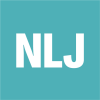Labor Migration from Third Countries to Swedish Low-wage Jobs
DOI:
https://doi.org/10.18291/njwls.v8i1.104847Nøgleord:
Health, Working Environment and Wellbeing, Gender, ethnicity, age & diversity, Employment, wages, unemployment & rehabilitation, Labor market institutions & social partners, Organization & managementResumé
Since December 2008, Sweden has more liberal rules for labor immigration from ‘third countries’ – countries outside the European Union (EU) and European Economic Area (EEA) – than any other country in the Organisation for Economic Co-operation and Development (OECD). The introduction of employer-driven labor immigration, motivated by the need to address labor shortages, resulted in large inflows of migrants in low-skilled occupations in labor surplus sectors. This article examines the situation of the approximately 500 restaurant and cleaning workers who were granted work permits in Stockholm in 2012. More than four out of ten labor migrants ‘switched track’ from asylum seekers, students, or family connection. Every second worker was recruited to companies without collective agreements. In several cases, a nationality/ethnic link between migrant and employer appears to exist. The reasons why so many low-skilled labor migrants in nonseasonal occupations were recruited are discussed. Finally, alternative explanations for the decline of this type of labor migration after 2011 are considered.Downloads
Publiceret
Citation/Eksport
Nummer
Sektion
Licens
The Copyright Holder of this Journal is the authors and the Journal. Normally the journal use the CC-BY NC-ND 4.0 licence.
Exceptions to the license terms may be granted
If you want to use content in the Journal in another way then described by this license, you must contact the licensor and ask for permission. Contact Annica Asp at annica.asp@kau.se. Exceptions are always given for specific purposes and specific content only.
Sherpa/Romeo
The Journal is listed as a blue journal in Sherpa/Romeo, meaning that the author can archive post-print ((ie final draft post-refereeing) and author can archive publisher's version/PDF.
Copyright of others
Authors are responsible for obtaining permission from copyright holders for reproducing any illustrations, tables, figures or lengthy quotations previously published elsewhere.
Archives policy
All published material is archived at the Danish Royal Library in conformity with the Danish rules of legal deposit.
Plagiarism screening
We do not screen articles for plagiarism. It is the responsibility of the authors to make sure they do not plagiate.

 Associate professor, Department of Sociology
Associate professor, Department of Sociology
 Professor, Department of Sociology. E-mail:
Professor, Department of Sociology. E-mail: 
